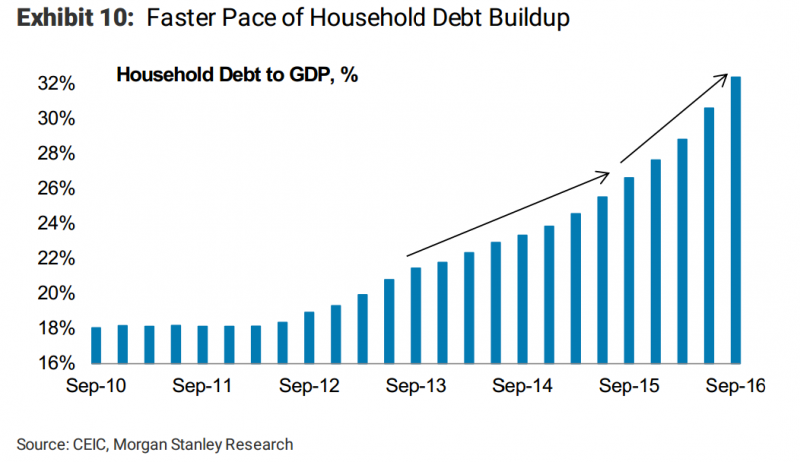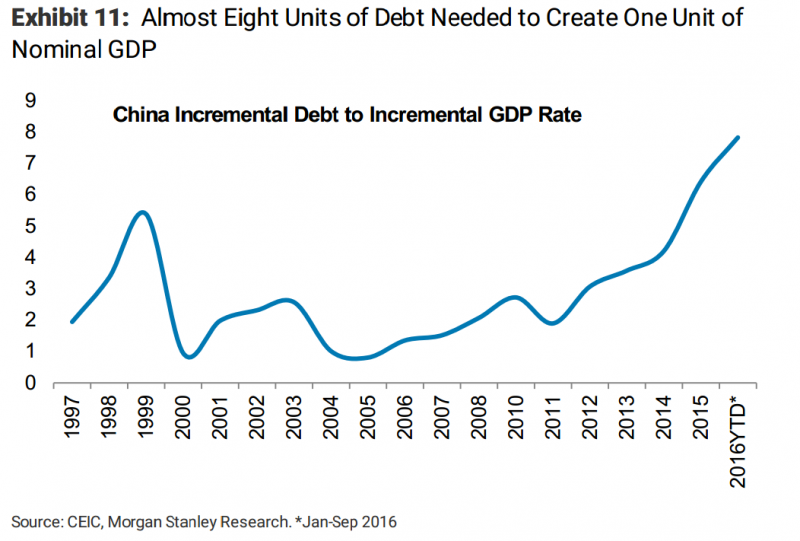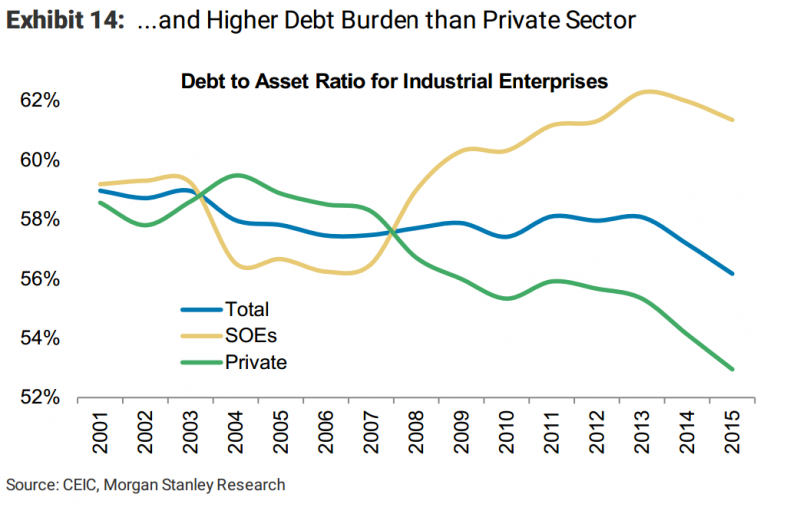China’s debt to GDP ratio keeps rising.
Borrowing has helped fuel growth in China, but it’s starting to lose its effectiveness.
Analysts at Morgan Stanley said in a note to clients that China’s debt to GDP rose to 276% in the third quarter this year from 249% in 2015.
Households have accelerated their borrowing faster than businesses.
“This has been mainly driven by a rapid rise in new mortgages from RMB 1.7 trillion in 2014 to RMB 4.6 trillion in the past 12 months,” according to Morgan Stanley.
With the debt overhang growing, the economic benefits of borrowing more are shrinking. It took nearly eight units of debt to produce one unit of GDP growth in 2016, compared with around four in 2014.
Here's how it looks in the charts:
Overall debt continues to rise steadily, while, according to Morgan Stanley, GDP growth is set to fall. "We expect growth to moderate from 6.7% in 2016 to 6.4% in 2017 and 6.2% in 2018," Morgan Stanley said.

The share of borrowing carried out by households has accelerated, led by mortgages. Property sales were up 26% year-on-year in October, despite government measures to cool the market.

As debt builds up, more has to be spent servicing interest, making any additional borrowing less effective. It took eight units of debt to get one extra unit of GDP growth, compared with half that in 2014.

Much of the problem lies in the state-owned entities, which are businesses run by the government often relying heavily on subsidies. They generally have higher debt levels than private businesses and lower profits, according to Morgan Stanley.


